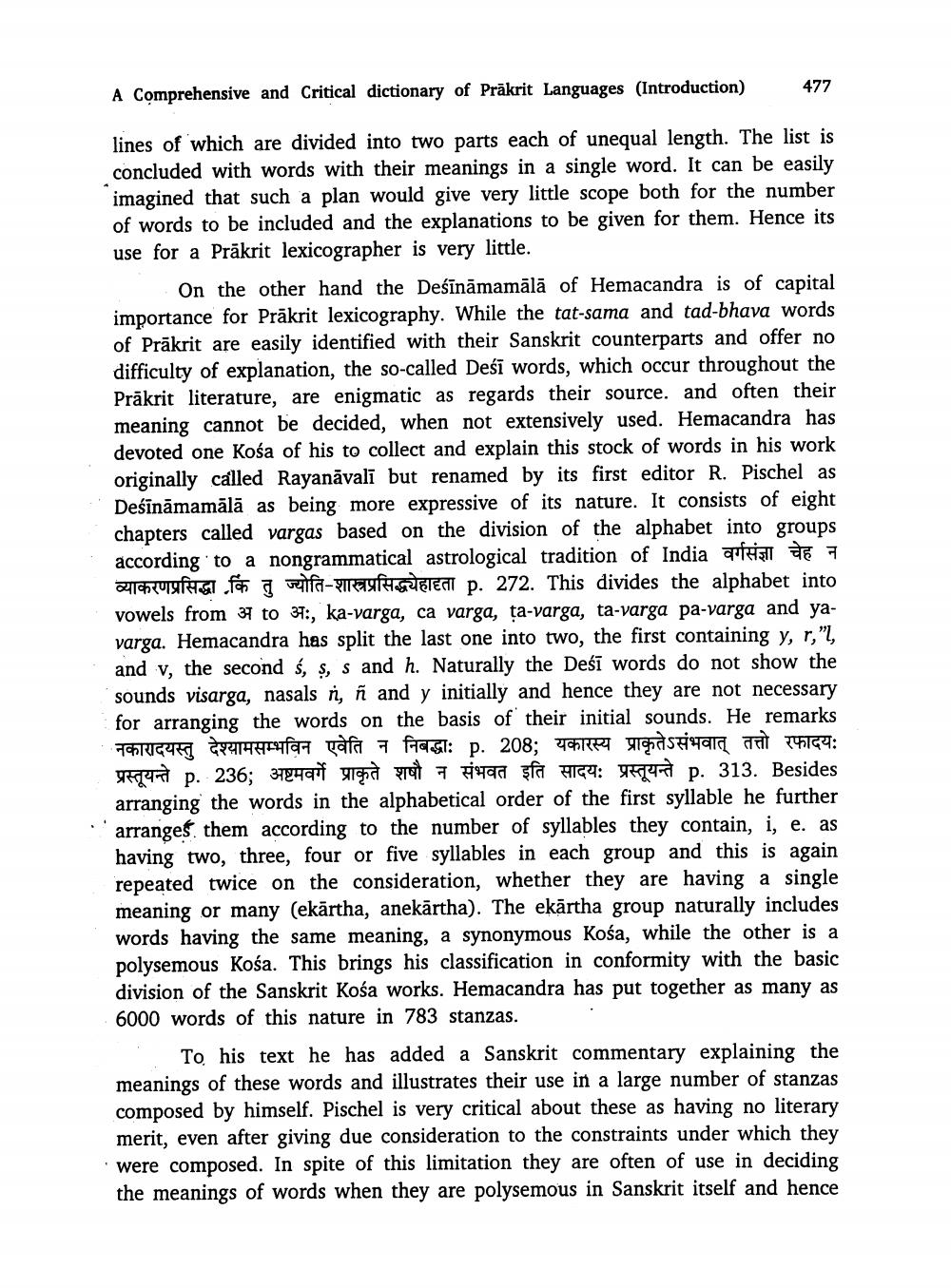________________
A Comprehensive and Critical dictionary of Prākrit Languages (Introduction)
477
lines of which are divided into two parts each of unequal length. The list is concluded with words with their meanings in a single word. It can be easily imagined that such a plan would give very little scope both for the number of words to be included and the explanations to be given for them. Hence its use for a Prākrit lexicographer is very little.
On the other hand the Deśīnāmamālā of Hemacandra is of capital importance for Prākrit lexicography. While the tat-sama and tad-bhava words of Prākrit are easily identified with their Sanskrit counterparts and offer no difficulty of explanation, the so-called Deśī words, which occur throughout the Prākrit literature, are enigmatic as regards their source. and often their meaning cannot be decided, when not extensively used. Hemacandra has devoted one kośa of his to collect and explain this stock of words in his work originally called Rayanăvali but renamed by its first editor R. Pischel as Deśīnāmamālā as being more expressive of its nature. It consists of eight chapters called vargas based on the division of the alphabet into groups according to a nongrammatical astrological tradition of India aufhall E 7 2116huruf for a weilfa- UHSETEGI p. 272. This divides the alphabet into vowels from 37 to 37:, ka-varga, ca varga, ţa-varga, ta-varga pa-varga and yavarga. Hemacandra has split the last one into two, the first containing y, r,"l, and v, the second s, ş, s and h. Naturally the Deśī words do not show the sounds visarga, nasals n, ñ and y initially and hence they are not necessary for arranging the words on the basis of their initial sounds. He remarks
RG E 441444f rafa 7 faGl: p. 208; reet Micasa a 14:
4 p. 236; 378497 mod TOT 7 4490 sfa 164: u p. 313. Besides arranging the words in the alphabetical order of the first syllable he further arrange them according to the number of syllables they contain, i, e. as having two, three, four or five syllables in each group and this is again repeated twice on the consideration, whether they are having a single meaning or many (ekārtha, anekārtha). The ekārtha group naturally includes words having the same meaning, a synonymous Kośa, while the other is a polysemous Kośa. This brings his classification in conformity with the basic division of the Sanskrit Kośa works. Hemacandra has put together as many as 6000 words of this nature in 783 stanzas.
To his text he has added a Sanskrit commentary explaining the meanings of these words and illustrates their use in a large number of stanzas composed by himself. Pischel is very critical about these as having no literary merit, even after giving due consideration to the constraints under which they were composed. In spite of this limitation they are often of use in deciding the meanings of words when they are polysemous in Sanskrit itself and hence




